formerly eScholarship Editions


|
|
|
|
Your request for similar items found 20 book(s). | Modify Search | Displaying 1 - 20 of 20 book(s) | |
| 1. | 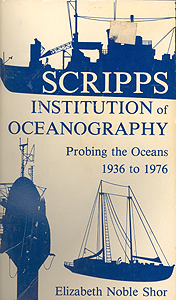 | Title: Scripps Institution of Oceanography: probing the oceans, 1936 to 1976 Author: Shor, Elizabeth Noble Published: Tofua Press, 1978 Subjects: Similar Items |
| 2. | 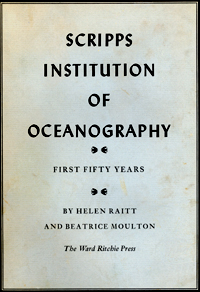 | Title: Scripps Institution of Oceanography; first fifty years Author: Raitt, Helen Published: W. Ritchie Press, 1967 Subjects: Similar Items |
| 3. | 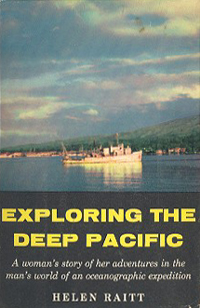 | Title: Exploring the deep Pacific. Author: Raitt, Helen Published: Norton, 1956 Subjects: Similar Items |
| 4. | 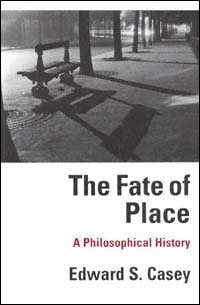 | Title: The fate of place: a philosophical history Author: Casey, Edward S 1939- Published: University of California Press, 1997 Subjects: Philosophy | Classical Philosophy | Architecture | Intellectual History | Geography Publisher's Description: In this imaginative and comprehensive study, Edward Casey, one of the most incisive interpreters of the Continental philosophical tradition, offers a philosophical history of the evolving conceptualizations of place and space in Western thought. Not merely a presentation of the ideas of other philosophers, The Fate of Place is acutely sensitive to silences, absences, and missed opportunities in the complex history of philosophical approaches to space and place. A central theme is the increasing neglect of place in favor of space from the seventh century A.D. onward, amounting to the virtual exclusion of place by the end of the eighteenth century.Casey begins with mythological and religious creation stories and the theories of Plato and Aristotle and then explores the heritage of Neoplatonic, medieval, and Renaissance speculations about space. He presents an impressive history of the birth of modern spatial conceptions in the writings of Newton, Descartes, Leibniz, and Kant and delineates the evolution of twentieth-century phenomenological approaches in the work of Husserl, Merleau-Ponty, Bachelard, and Heidegger. In the book's final section, Casey explores the postmodern theories of Foucault, Derrida, Tschumi, Deleuze and Guattari, and Irigaray. [brief] Similar Items |
| 5. | 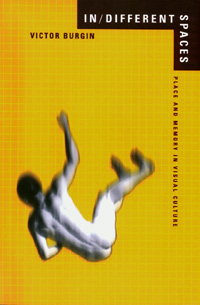 | Title: In/different spaces: place and memory in visual culture Author: Burgin, Victor Published: University of California Press, 1996 Subjects: Art | Art Criticism | Social Science Publisher's Description: Recent discussions about the culture of images have focused on issues of identity - sexual, racial, national - and the boundaries that define subjectivity. In this context Victor Burgin adopts an original critical strategy. He understands images less in traditional terms of the specific institutions that produce them, such as cinema, photography, advertising, and television, and more as hybrid mental constructs composed of fragments derived from the heterogeneous sources that together constitute the "media." Through deft analyses of a photograph by Helmut Newton, Parisian cityscapes, the space of the department store, a film by Ousmane Sembéne, and the writings of Henri Lefebvre, Andrè Breton, and Roland Barthes, Burgin develops an incisive theory of our culture of images and spectacle. In/Different Spaces explores the construction of identities in the psychical space between perception and consciousness, drawing upon psychoanalytic theories to describe the constitution and maintenance of "self" and "us" - in imaginary spatial and temporal relations to "other" and "them" - through the all-important relay of images. For Burgin, the image is never a transparent representation of the world but rather a principal player on the stage of history. [brief] Similar Items |
| 6. |  | Title: Imperial bedlam: institutions of madness in colonial southwest Nigeria Author: Sadowsky, Jonathan Hal Published: University of California Press, 1999 Subjects: African Studies | Psychology | African History | Medicine | Social Problems Publisher's Description: The colonial government of southern Nigeria began to use asylums to confine the allegedly insane in 1906. These asylums were administered by the British but confined Africans. Yet, as even many in the government recognized, insanity is a condition that shows cultural variation. Who decided the inmates were insane and how? This sophisticated historical study pursues these questions as it examines fascinating source material - writings by African patients in these institutions and the reports of officials, doctors, and others - to discuss the meaning of madness in Nigeria, the development of colonial psychiatry, and the connections between them. Jonathan Sadowsky's well-argued, concise study provides important new insights into the designation of madness across cultural and political frontiers. Imperial Bedlam follows the development of insane asylums from their origins in the nineteenth century to innovative treatment programs developed by Nigerian physicians during the transition to independence. Special attention is given to the writings of those considered "lunatics," a perspective relatively neglected in previous studies of psychiatric institutions in Africa and most other parts of the world. Imperial Bedlam shows how contradictions inherent in colonialism were articulated in both asylum policy and psychiatric theory. It argues that the processes of confinement, the labeling of insanity, and the symptoms of those so labeled reflected not only cultural difference but also political divides embedded in the colonial situation. Imperial Bedlam thus emphasizes not only the cultural background to madness but also its political and experiential dimensions. [brief] Similar Items |
| 7. | 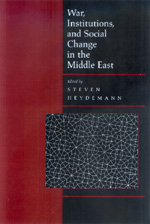 | Title: War, institutions, and social change in the Middle East Author: Heydemann, Steven Published: University of California Press, 2000 Subjects: Politics | Middle Eastern Studies | Middle Eastern History | Postcolonial Studies | Cultural Anthropology Publisher's Description: Few areas of the world have been as profoundly shaped by war as the Middle East in the twentieth century. Despite the prominence of war-making in this region, there has been surprisingly little research investigating the effects of war as a social and political process in the Middle East. To fill this gap, War, Institutions, and Social Change in the Middle East brings together an international and interdisciplinary group of scholars who explore the role of war preparation and war-making on the formation and transformation of states and societies in the contemporary Middle East. Their findings pose significant challenges to widely accepted assumptions and present new theoretical starting points for the study of war and the state in the contemporary developing world. Heydemann's collaborators include political scientists, historians, anthropologists, and sociologists from the Middle East, Europe, and the United States. Their essays are both theoretically sophisticated and empirically rich, covering topics such as the effects of World War II on state-market relations in Syria and Egypt, the role of war in the rise of the Palestine Liberation Organization, the political economy of Lebanese militias, and the effects of the 1967 war on state and social institutions in Israel. The volume originated as a research planning project of the Joint Committee on the Near and Middle East of the Social Science Research Council. [brief] Similar Items |
| 8. | 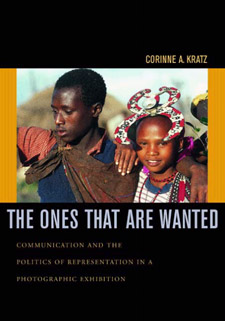 | Title: The ones that are wanted: communication and the politics of representation in a photographic exhibition Author: Kratz, Corinne Ann 1953- Published: University of California Press, 2002 Subjects: Anthropology | Cultural Anthropology | African Studies | Photography | Art Theory Publisher's Description: The Okiek people of Kenya's forested highlands have a long history of hunting, honey gathering, and trading with their Maasai and Kipsigis neighbors; several decades ago, they also began farming and herding. This book follows a traveling exhibition of anthropologist Corinne Kratz's photographs of the Okiek through showings at seven venues, including the National Museum in Nairobi and the Smithsonian Institution in Washington, D.C. Kratz tells the story of the exhibition--the stereotypes it sought to challenge, how commentaries by Okiek people were incorporated, and different ways that viewers in Kenya and the United States understood it. In addition to presenting wonderful images of a little-known people, this inviting book explores the exhibition medium itself, focusing on the complexities and possibilities of cultural representation. Walking a fine line between the photographic intimacy of a family album and the ethnographic distance of documentary photography, The Ones That Are Wanted reproduces the exhibition in full, with its vibrant color photographs, multilingual captions, and lively commentary. Throughout, Kratz incorporates insightful reflections on her changing involvement with the exhibition as anthropologist, photographer, and curator, and she provides perceptive discussions of such topics as photography in Kenya, stereotypes, and the post-1970s proliferation of the politics of representation. [brief] Similar Items |
| 9. |  | Title: The oceans, their physics, chemistry, and general biology Author: Sverdrup, H. U. (Harald Ulrik) 1888-1957 Published: Prentice-Hall, 1942 Subjects: Similar Items |
| 10. |  | Title: Places of inquiry: research and advanced education in modern universities Author: Clark, Burton R Published: University of California Press, 1995 Subjects: Social Science | Sociology | Education Publisher's Description: A distinguished work by one of America's leading scholars of higher education, Places of Inquiry explores one of the major issues in university education today: the relationship among research, teaching, and study. Based on cross-national research on the university systems of Germany, Britain, France, the United States, and Japan - which was first reported in the edited volume The Research Foundations of Graduate Education (California, 1993) - this book offers in-depth comparative analysis and draws provocative conclusions about the future of the research-teaching-study nexus.With characteristic clarity and vision, Burton R. Clark identifies the main features and limitations of each national system: governmental and industrial dominance in Japan, for example, and England's collegiate form of university. He examines the forces drawing research, teaching, and study apart and those binding them together. Highlighting the fruitful integration of teaching and research in the American graduate school, Clark decries the widely held view that these are antithetical activities. Rather, he demonstrates that research provides a rich basis for instruction and learning. Universities, he maintains, are places of inquiry, and the future lies with institutions firmly grounded in this belief. [brief] Similar Items |
| 11. | 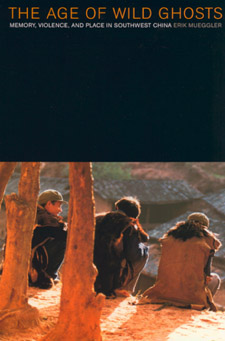 | Title: The age of wild ghosts: memory, violence, and place in Southwest China Author: Mueggler, Erik 1962- Published: University of California Press, 2001 Subjects: Anthropology | Cultural Anthropology | Asian Studies | China | Ethnic Studies Publisher's Description: In Erik Mueggler's powerful and imaginative ethnography, a rural minority community in the mountains of Southwest China struggles to find its place at the end of a century of violence and at the margins of a nation-state. Here, people describe the present age, beginning with the Great Leap Famine of 1958-1960 and continuing through the 1990s, as "the age of wild ghosts." Their stories of this age converge on a dream of community - a bad dream, embodied in the life, death, and reawakening of a single institution: a rotating headman-ship system that expired violently under the Maoist regime. Displaying a sensitive understanding of both Chinese and the Tibeto-Burman language spoken in this region, Mueggler explores memories of this institution, including the rituals and poetics that once surrounded it and the bitter conflicts that now haunt it.To exorcise "wild ghosts," he shows, is nothing less than to imagine the state and its power, to trace the responsibility for violence to its morally ambiguous origins, and to enunciate calls for justice and articulate longings for reconciliation. [brief] Similar Items |
| 12. | 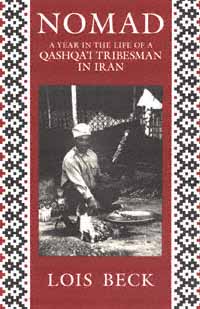 | Title: Nomad: a year in the life of a Qashqa'i tribesman in Iran Author: Beck, Lois 1944- Published: University of California Press, 1991 Subjects: Anthropology | Cultural Anthropology | Middle Eastern Studies | Middle Eastern History Publisher's Description: Borzu Qermezi was the headman and political leader of a group of nomadic pastoralists who were part of the Qashqa'i confederacy of southwest Iran. Proud, complex, strong-willed, witty, and cunning, Borzu successfully led his people on their annual migrations for many years. He regulated their travel; mediated conflicts; intervened in (and sometimes exacerbated) tense situations between his people and other nomads; and dealt with the government police agency. Structuring the account around the four seasons, Lois Beck recounts the day-to-day activities of Borzu during the year she spent traveling with his people. She describes the rigors of nomadic life and the consequences of decisions made in haste.During 1970 to 1971, Borzu and his people were faced with many difficulties. When the expected winter rains did not fall, pastures and crops shriveled. Unable to sell their starving livestock for any profit, Borzu's people saw their debts to urban merchants and moneylenders increase. At the same time, Iran exercised more bureaucratic control over the Qashqa'i by applying new policies over migratory schedules and the allocation of scarce pastures, and by introducing non-Qashqa'i agriculturalists and livestock investors as legitimate land users. All these measures threatened the nomad's way of life and eventually undermined the role of headmen such as Borzu. Lois Beck details the vicissitudes endured by Borzu's people and the strategies he devised to cope with them.Blending ethnographic and historical material, this book contains information unavailable for other tribal and nomadic pastoral groups in the Middle East and central Asia. Through Beck's deft analysis, we come to understand why nomadic pastoralism was once an important part of this vast region, and why tribal society has endured. [brief] Similar Items |
| 13. | 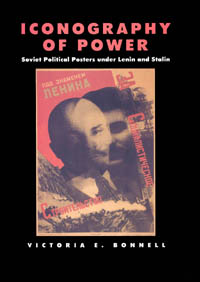 | Title: Iconography of power: Soviet political posters under Lenin and Stalin Author: Bonnell, Victoria E Published: University of California Press, 1998 Subjects: Sociology | Popular Culture | European Studies | Russian and Eastern European Studies | Politics | Art Criticism | History | European History Publisher's Description: Masters at visual propaganda, the Bolsheviks produced thousands of vivid and compelling posters after they seized power in October 1917. Intended for a semi-literate population that was accustomed to the rich visual legacy of the Russian autocracy and the Orthodox Church, political posters came to occupy a central place in the regime's effort to imprint itself on the hearts and minds of the people and to remold them into the new Soviet women and men. In this first sociological study of Soviet political posters, Victoria Bonnell analyzes the shifts that took place in the images, messages, styles, and functions of political art from 1917 to 1953. Everyone who lived in Russia after the October revolution had some familiarity with stock images of the male worker, the great communist leaders, the collective farm woman, the capitalist, and others. These were the new icons' standardized images that depicted Bolshevik heroes and their adversaries in accordance with a fixed pattern. Like other "invented traditions" of the modern age, iconographic images in propaganda art were relentlessly repeated, bringing together Bolshevik ideology and traditional mythologies of pre-Revolutionary Russia. Symbols and emblems featured in Soviet posters of the Civil War and the 1920s gave visual meaning to the Bolshevik worldview dominated by the concept of class. Beginning in the 1930s, visual propaganda became more prescriptive, providing models for the appearance, demeanor, and conduct of the new social types, both positive and negative. Political art also conveyed important messages about the sacred center of the regime which evolved during the 1930s from the celebration of the heroic proletariat to the deification of Stalin. Treating propaganda images as part of a particular visual language, Bonnell shows how people "read" them - relying on their habits of seeing and interpreting folk, religious, commercial, and political art (both before and after 1917) as well as the fine art traditions of Russia and the West. Drawing on monumental sculpture and holiday displays as well as posters, the study traces the way Soviet propaganda art shaped the mentality of the Russian people (the legacy is present even today) and was itself shaped by popular attitudes and assumptions. Iconography of Power includes posters dating from the final decades of the old regime to the death of Stalin, located by the author in Russian, American, and English libraries and archives. One hundred exceptionally striking posters are reproduced in the book, many of them never before published. Bonnell places these posters in a historical context and provides a provocative account of the evolution of the visual discourse on power in Soviet Russia. [brief] Similar Items |
| 14. | 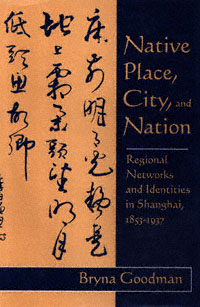 | Title: Native place, city, and nation: regional networks and identities in Shanghai, 1853-1937 Author: Goodman, Bryna 1955- Published: University of California Press, 1995 Subjects: History | Asian History | China | Urban Studies Publisher's Description: This book explores the role of native place associations in the development of modern Chinese urban society and the role of native-place identity in the development of urban nationalism. From the late nineteenth to the early twentieth century, sojourners from other provinces dominated the population of Shanghai and other expanding commercial Chinese cities. These immigrants formed native place associations beginning in the imperial period and persisting into the mid-twentieth century. Goodman examines the modernization of these associations and argues that under weak urban government, native place sentiment and organization flourished and had a profound effect on city life, social order and urban and national identity. [brief] Similar Items |
| 15. | 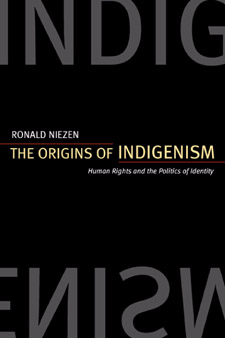 | Title: The origins of indigenism: human rights and the politics of identity Author: Niezen, Ronald Published: University of California Press, 2003 Subjects: Anthropology | Ethnic Studies | International Relations | Social Problems Publisher's Description: "International indigenism" may sound like a contradiction in terms, but it is indeed a global phenomenon and a growing form of activism. In his fluent and accessible narrative, Ronald Niezen examines the ways the relatively recent emergence of an internationally recognized identity - "indigenous peoples" - intersects with another relatively recent international movement - the development of universal human rights laws and principles. This movement makes use of human rights instruments and the international organizations of states to resist the political, cultural, and economic incursions of individual states. The concept "indigenous peoples" gained currency in the social reform efforts of the International Labor Organization in the 1950s, was taken up by indigenous nongovernmental organizations, and is now fully integrated into human rights initiatives and international organizations. Those who today call themselves indigenous peoples share significant similarities in their colonial and postcolonial experiences, such as loss of land and subsistence, abrogation of treaties, and the imposition of psychologically and socially destructive assimilation policies. Niezen shows how, from a new position of legitimacy and influence, they are striving for greater recognition of collective rights, in particular their rights to self-determination in international law. These efforts are influencing local politics in turn and encouraging more ambitious goals of autonomy in indigenous communities worldwide. [brief] Similar Items |
| 16. |  | Title: Rethinking home: a case for writing local history Author: Amato, Joseph Anthony Published: University of California Press, 2002 Subjects: History | Intellectual History | United States History | Writing Publisher's Description: Joseph A. Amato proposes a bold and innovative approach to writing local history in this imaginative, wide-ranging, and deeply engaging exploration of the meaning of place and home. Arguing that people of every place and time deserve a history, Amato draws on his background as a European cultural historian and a prolific writer of local history to explore such topics as the history of cleanliness, sound, anger, madness, the clandestine, and the environment in southwestern Minnesota. While dedicated to the unique experiences of a place, his lively work demonstrates that contemporary local history provides a vital link for understanding the relation between immediate experience and the metamorphosis of the world at large. In an era of encompassing forces and global sensibilities, Rethinking Home advocates the power of local history to revivify the individual, the concrete, and the particular. This singular book offers fresh perspectives, themes, and approaches for energizing local history at a time when the very notion of place is in jeopardy. Amato explains how local historians shape their work around objects we can touch and institutions we have directly experienced. For them, theory always gives way to facts. His vivid portraits of individual people, places, situations, and cases (which include murders, crop scams, and taking custody of the law) are joined to local illustrations of the use of environmental and ecological history. This book also puts local history in the service of contemporary history with the examination of recent demographic, social, and cultural transformations. Critical concluding chapters on politics and literature--especially Sinclair Lewis's Main Street and Longfellow's Hiawatha --show how metaphor and myth invent, distort, and hold captive local towns, peoples, and places. [brief] Similar Items |
| 17. |  | Title: Disrupted lives: how people create meaning in a chaotic world Author: Becker, Gaylene Published: University of California Press, 1998 Subjects: Anthropology | Medicine | Sociology Publisher's Description: Our lives are full of disruptions, from the minor - a flat tire, an unexpected phone call - to the fateful - a diagnosis of infertility, an illness, the death of a loved one. In the first book to examine disruption in American life from a cultural rather than a psychological perspective, Gay Becker follows hundreds of people to find out what they do after something unexpected occurs. Starting with bodily distress, she shows how individuals recount experiences of disruption metaphorically, drawing on important cultural themes to help them reestablish order and continuity in their lives. Through vivid and poignant stories of people from different walks of life who experience different types of disruptions, Becker examines how people rework their ideas about themselves and their worlds, from the meaning of disruption to the meaning of life itself.Becker maintains that to understand disruption, we must also understand cultural definitions of normalcy. She questions what is normal for a family, for health, for womanhood and manhood, and for growing older. In the United States, where life is expected to be orderly and predictable, disruptions are particularly unsettling, she contends. And, while continuity in life is an illusion, it is an effective one because it organizes people's plans and expectations.Becker's phenomenological approach yields a rich, compelling, and entirely original narrative. Disrupted Lives acknowledges the central place of discontinuity in our existence at the same time as it breaks new ground in understanding the cultural dynamics that underpin life in the United States. FROM THE BOOK :"The doctor was blunt. He does not mince words. He did a [semen] analysis and he came back and said, 'This is devastatingly poor.' I didn't expect to hear that. It had never occurred to me. It was such a shock to my sense of self and to all these preconceptions of my manliness and virility and all of that. That was a very, very devastating moment and I was dumbfounded. . . . In that moment it totally changed the way that I thought of myself." [brief] Similar Items |
| 18. | 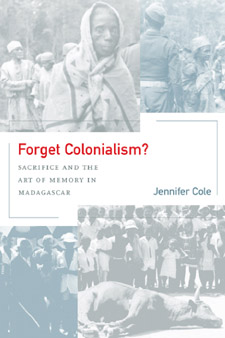 | Title: Forget colonialism?: sacrifice and the art of memory in Madagascar Author: Cole, Jennifer 1966- Published: University of California Press, 2001 Subjects: Anthropology | African Studies | Geography | African History | Cultural Anthropology | Postcolonial Studies Publisher's Description: While doing fieldwork in a village in east Madagascar that had suffered both heavy settler colonialism and a bloody anticolonial rebellion, Jennifer Cole found herself confronted by a puzzle. People in the area had lived through almost a century of intrusive French colonial rule, but they appeared to have forgotten the colonial period in their daily lives. Then, during democratic elections in 1992-93, the terrifying memories came flooding back. Cole asks, How do once-colonized peoples remember the colonial period? Drawing on a fine-grained ethnography of the social practices of remembering and forgetting in one community, she develops a practice-based approach to social memory. [brief] Similar Items |
| 19. | 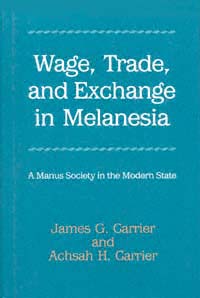 | Title: Wage, trade, and exchange in Melanesia: a Manus society in the modern state Author: Carrier, James G Published: University of California Press, 1989 Subjects: Anthropology Publisher's Description: Ponam Island, a small community in Manus Province, Papua New Guinea, is the subject of this innovative study. The authors extend the criticism within anthropology of ethnographies that attempt to analyze village communities without reference to the nations of which they are a part, and that equate the traditional and the exotic with the untouched. They do so by describing the links between a peripheral village society and Papua New Guinea's national economy and institutions, in a way that will interest all those concerned with development and underdevelopment.The analysis focuses on major socioeconomic areas of village life: education, migration, wage employment, and remittance; trade, commerce, and exchange; subsistence fishing; ceremonial exchange. The authors' findings challenge the idea that colonial and Western-oriented encroachment leads to the decay of village societies or to their adopting Western values and practices. Ponam has been under significant Western influence for almost a century, yet the society has not decayed. It remains flourishing and generative, uniquely itself and neither blindly traditional nor mindlessly Western. [brief] Similar Items |
| 20. | 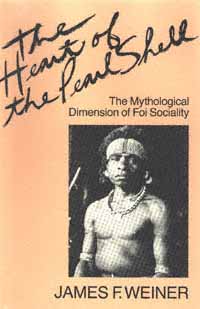 | Title: The heart of the pearl shell: the mythological dimension of Foi sociality Author: Weiner, James F Published: University of California Press, 1988 Subjects: Anthropology Publisher's Description: For the Foi people who live on the edge of the central highlands of Papua New Guinea, the flow of pearl shells is the "heart" of their social life. The pearl shell is the exchange item that mediates the creation of their most important sexual and social roles. The Heart of the Pearl Shell analyzes a number of myths of the Foi people, elegantly bringing together significant ethnographic materials in a way that has important implications for the development of social theory in anthropology and in Melanesian studies. Scholars of semiotic-symbolic anthropology and of comparative religion will also share the author's interest in the meaning and role of mythology in Foi culture.Instead of relying on orthodox methods of Freudian or structuralist interpretation, James Weiner assumes there is a dialectical relationship between the images of Foi myth and the images of the Foi's social world. He demonstrates how each set of these images is dependent upon the other for its creation. This innovative study locates Foi social meaning in the re-creation and attempted solution of the moral dilemmas that are crystallized in mythology and other poetic usages. [brief] Similar Items |